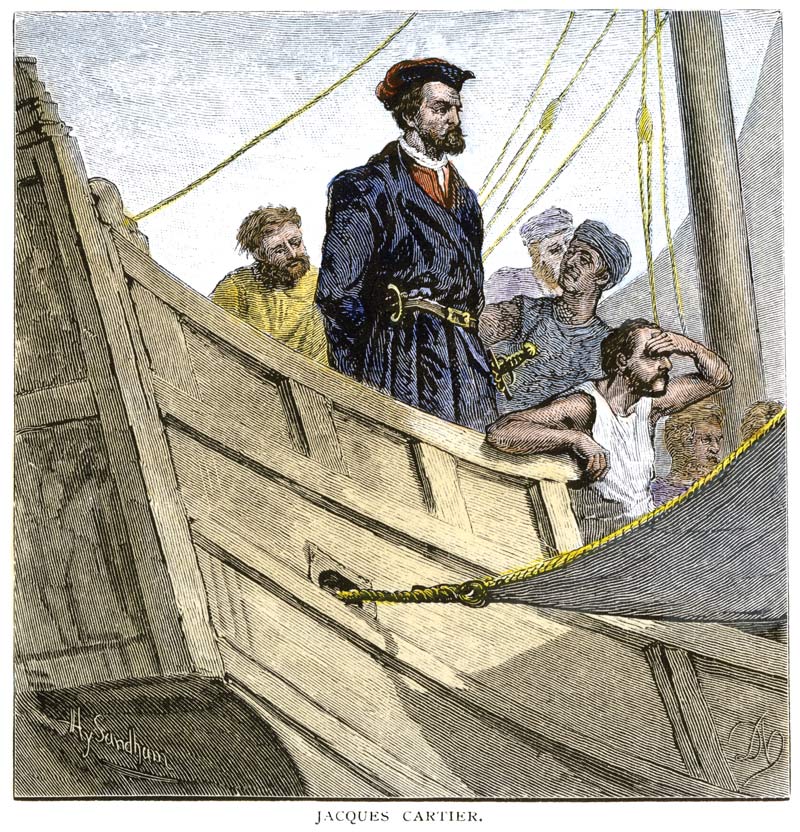
The early part of the race to the New World involved mainly the Spanish and the English, though England dropped out of the effort after John Cabot’s 1497 trip to Newfoundland. It was too preoccupied at home with religious strife, wars and domestic politics. The Spanish, meanwhile, had success in the southern hemisphere, claiming territory and bringing back gold.
In 1523, King Francis I of France felt his country should get into the colonial game. He helped finance an expedition to the New World hoping to find a passage to the Orient, or at least gold. It was led by Giovanni da Verrazzano, who was born in Tuscany but moved to Dieppe. Verrazzano explored North America’s east coast as far north as Newfoundland, claiming all of it for France. He returned in 1527 and 1528, venturing further south this time. In the Lesser Antilles, he went ashore, was captured by locals and killed.
“I am rather inclined to believe that this is the land God gave to Cain.”
So, it fell to Jacques Cartier to find the elusive passage to Asia for France. In 1534, he set off from St. Malo, reaching Newfoundland in 20 days, arriving on May 10. He sailed north to Labrador, where he gave his now famous assessment of this new country: “I am rather inclined to believe that this is the land God gave to Cain.”
Cartier was aware of Verrazzano’s fate, so he was wary of contacting any Indigenous Peoples. Plus, there was a general climate of fear in France at the time. French historian Robert Mandrou wrote that fear was the dominant emotion in 16th century France: fear of poverty, of starvation, of war and of the supernatural, all of which informed Cartier’s interactions.
His first encounter went well though. Locals approached in canoes, indicating they were interested in trade. “We likewise made signs to them that we wished them no harm,” Cartier wrote in the ship’s log, “and sent two men ashore, to offer them some knives and other iron goods and a red cap to give to their chief.”
A subsequent encounter didn’t go as well. More than 40 canoes filled with Mi’kmaq approached and surrounded a vessel that was exploring the coast. “All came toward our longboat, dancing and showing many signs of joy, and of their desire to be friends,” Cartier wrote. But the number of people made him nervous, his fears resurfaced and he ordered his men to shoot over their heads with two small cannons. The Mi’kmaq retreated.
Cartier had more luck with the St. Lawrence Iroquoians, who he encountered at the Baie de Gaspé. Their relationship was good until Cartier’s men put up a large cross and knelt before it. The Iroquoian chief, Donnacona, approached Cartier’s ship in a canoe and delivered a speech, pointing to the cross, evidently worried that Cartier was using it to lay claim to the land, a worry that would eventually be borne out.
Cartier bartered with various Indigenous Peoples, but the most valuable thing he received in return was knowledge of the land, a knowledge that allowed Cartier and his men to survive their first harsh Canadian winter.
Advertisement












